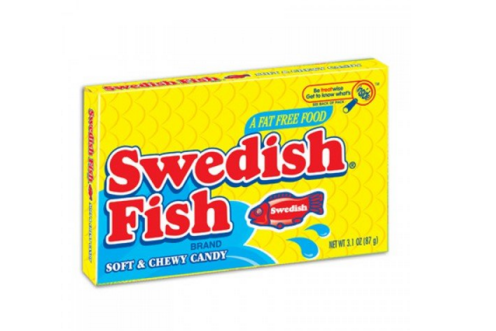For Bon Appetit, by Amanda Shapiro.

Black licorice: the black coffee of candies, the rye whiskey of candies, the candy I swore when I was 12 that I would never, ever eat. I was a Swedish fish loyalist, unless it was Halloween or I was at the movies, where I’d get Milk Duds because I could masticate like a cow without anyone seeing me. Meanwhile, my mom always went for Good & Plenty: a totally perplexing choice because they tasted like the smell of old socks. Every now and then I’d try one, and every time, old socks.
Until one day, that changed. I was in college. My palate had refined, or maybe it had been obliterated by Bacardi Razz and scalding hot shitty pizza. Maybe I missed my mom! Regardless, I bought a box of Good & Plenty and nibbled on them in the library. The hard candy shell was pleasing. The actual licorice was pretty not bad. What tasted bitter a decade ago now tasted like sugar with some earthy, herbal depth.
“What tasted bitter a decade ago now tasted like sugar with some earthy, herbal depth.”
After college and living in North Carolina, I discovered A Southern Season, the specialty food mecca in Chapel Hill where there’s an entire room devoted to uncommon candy. I fell for Haribo black licorice wheels and Australian soft chews. I realized that, in the world of licorice, Good & Plenty is basically caffeine-free Diet Coke.
A few years later, I was in Berlin, at a store dedicated to licorice. I learned about salted licorice, a Nordic delicacy, and salmiak, an even saltier variety made with ammonium, which German health officials have deemed “not suitable for children.” It was unfathomable! A candy that kids weren’t supposed to eat.

Licorice, I’ve come to learn, is a tonic as much as a candy. It comes from the root of a plant that’s been shown to fight inflammation and viral infections, not to mention constipation. It’s so powerful that health guidelines suggest not exceeding 5 grams a day (don’t worry, you couldn’t eat that much in candy-form if you tried). Maligned and misunderstood in America, licorice is used in Chinese and Ayurvedic medicine and is said to calm stomachs, open lungs, and ease minds. In fact, I’m drinking a cup of licorice spice tea right now and feeling extremely relaxed.
Over time I’ve pushed my tolerance to saltier and saltier degrees. I seek it out when I travel and look for types I’ve never had before. Now I eat salmiak licorice the way I sip amaro after a meal: I like the taste, which is like sea water in a good way, and I believe the health benefits too. (Salmiak is hard to find in the U.S., even in New York. I get my stash from Sockerbit, a Scandinavian candy store, which also ships online.)
When people say they hate black licorice, I don’t try to defend it. Because the truth is, it’s not for everyone, or even most people (my mom would balk at the types I eat). And, besides, licorice doesn’t need your love. There are entire parts of the world that adore the stuff. They’ve been eating it for centuries because it’s a delicious, grown-up, candy superfood, and that is some wisdom I can get behind.
Get this recipe: Salted Black Licorice Caramels
More from Bon Appetit:

